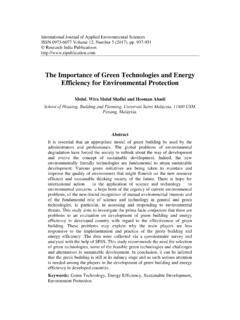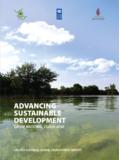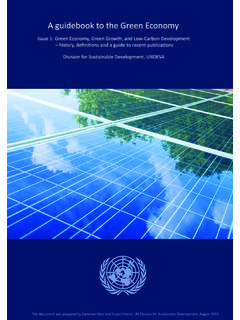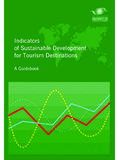Transcription of The strategic road network and the delivery of sustainable ...
1 DEPARTMENT FOR TRANSPORT. DfT Circular 02/2013. Department for Transport Great Minster House, 33 Horseferry Road, London SW1P 4DR. 10 September 2013. THE strategic ROAD network AND THE. delivery OF sustainable development . CONTENTS. 3. Policy aims and application .. 4. Plan 5. development 6. Access to the strategic road network .. 8. Environmental impact .. 9. Physical impact of development on the strategic road network .. 10. Annex A: Special types of development .. 11. Noise fences, screen fences, etc .. 11. Advertisements .. 11. Gateway structures and public art .. 11. Telecommunications equipment .. 11. Wind tubines .. 12. Annex B: Roadside facilities for road users on motorways and all-purpose trunk roads in England .. 14. 14. Application of policy .. 14. 14. Planning and development .. 15. Trip generation .. 15. Impact of roadside facilities on the strategic road network .. 16. Location .. 16. Minimum requirements for 16. Parking 18.
2 Picnic areas .. 18. Access to the strategic road network .. 18. 18. Mandatory parking 18. Retail 19. Hotels, conference centres and business centres .. 19. Coach interchanges, park & ride, and park & share .. 19. Facilities for low emission vehicles .. 20. Driver and tourist 20. On-site power generation and other sustainability measures .. 20. Schedule 20. 2. INTRODUCTION. 1. The Highways Agency is an executive agency of the Department for Transport and is responsible for operating, maintaining and improving the strategic road network in England on behalf of the Secretary of State for Transport, guided by its core principles of safe roads, reliable journeys, informed travellers'. 2. The Highways Agency undertakes this role in the context of wider Government policies and objectives. Operating an effective and efficient strategic road network makes a significant contribution to the delivery of sustainable economic growth, helping to create the conditions that support the realisation of the aspirations of businesses and communities, and is a key deliverable for the Highways Agency in meeting its remit of delivery partner to national economic growth.
3 3. This document sets out the way in which the Highways Agency will engage with communities and the development industry to deliver sustainable development and, thus, economic growth, whilst safeguarding the primary function and purpose of the strategic road network . It replaces the policy set out in Department for Transport (DfT) Circular 02/2007 Planning and the strategic Road network and DfT Circular 01/2008 Policy on Service Areas and other Roadside Facilities on Motorways and All-purpose Trunk Roads in England. Annex A provides additional policy specific to certain types of development , whilst Annex B sets out the requirements for roadside facilities that are eligible for permanent signing from the strategic road network . 4. This policy should be read by local authorities, developers, enterprise partnerships, community groups and others involved in any development proposal which may result in any traffic or other impact on the strategic road network .
4 It should be read in conjunction with the Highways Agency's planning protocol documents 1 which provide advice on working with the Highways Agency, within the parameters of national policy and this policy, to progress their planning proposals in an effective and positive manner. 5. The provisions set out in this document may be updated when appropriate to do so and readers are encouraged to check that they have the latest and true version by reference to the published version on the Department for Transport website. 2 Further, from time to time the Highways Agency will issue advice that seeks to address matters arising from the planning process that have the potential to impact on the strategic road network but which may require some particular consideration. Developers are encouraged to check the Highways Agency website or to contact the Highways Agency for further advice. 3. 6. This Circular is applicable to the whole strategic road network in England, including those roads managed by the Design, Build, Finance and Operate (DBFO) Companies.
5 1. 2. 3. ; Highways Agency Information Line (HAIL) 0300 123 5000; 3. POLICY AIMS AND APPLICATION. The strategic road network and economic growth 7. As operator, the Highways Agency supports the economy through the provision of a safe and reliable strategic road network , which allows for the efficient movement of people and goods. Such a network can play a key part in enabling and sustaining economic prosperity and productivity, while also helping support environmental and social aims by contributing to wider sustainability objectives and improved accessibility to key economic and social services. 8. A well-functioning strategic road network enables growth by providing for safe and reliable journeys. This can help reduce business costs by providing certainty, improving access to markets, enabling competition, improving labour mobility, enabling economies of scale, and helping attract inward investment. 9. development proposals are likely to be acceptable if they can be accommodated within the existing capacity of a section (link or junction) of the strategic road network , or they do not increase demand for use of a section that is already operating at over-capacity levels, taking account of any travel plan, traffic management and/or capacity enhancement measures that may be agreed.
6 However, development should only be prevented or refused on transport grounds where the residual cumulative impacts of development are severe. 10. However, even where proposals would not result in capacity issues, the Highways Agency's prime consideration will be the continued safe operation of its network . 11. Local authorities and developers will be required to ensure that their proposals comply in all respects with design standards. Where there would be physical changes to the network , schemes must be submitted to road safety, environmental, and non-motorised user audit 4 procedures, as well as any other assessment appropriate to the proposed development . The Design Manual for Roads and Bridges 5 sets out details of the Secretary of State's requirements for access, design, and audit, with which proposals must conform. 4. Non-motorised user audit will consider the needs of pedestrians, cyclists and horse riders, and should give particular consideration to the needs of disabled people.
7 5. 4. PLAN MAKING. Interaction with the strategic road network 12. The preparation and delivery of Local Plans 6 provides an opportunity to identify and support a pattern of development that minimises trip generation at source and encourages the use of sustainable modes of transport, minimises journey lengths for employment, shopping, leisure, education and other activities, and promotes accessibility for all. This can contribute to environmental objectives and also reduce the cost to the economy arising from the environmental, business and social impacts associated with traffic generation and congestion. 13. To make most efficient use of the limited available capacity on the strategic road network , and because additional physical capacity is difficult, costly and takes time to provide, the Highways Agency will engage in the Local Plan process to reduce the potential for creating congestion on the strategic road network . Location of development 14.
8 In framing its contribution to the development of Local Plans, the Highways Agency's aim will be to influence the scale and patterns of development so that it is planned in a manner which will not compromise the fulfilment of the primary purpose of the strategic road network . 15. In order to develop a robust transport evidence base, the Agency will work with the local authority to understand the transport implications of development options. This will include assessing the cumulative and individual impacts of the Local Plan proposals upon the ability of the road links and junctions affected to accommodate the forecast traffic flows in terms of capacity and safety. Such assessments should be carried out in line with current Department for Transport guidance or on a basis otherwise agreed with the Highways Agency. Promoting sustainable transport solutions through Local Plans 16. Through the production of Local Plans, development should be promoted at locations that are or can be made sustainable , that allow for uptake of sustainable transport modes and support wider social and health objectives, and which support existing business sectors as well as enabling new growth.
9 17. The Highways Agency will work with local authorities and developers to identify opportunities to introduce travel plan and demand management measures through the Local Plan. These will be based on existing and proposed patterns of development in a manner that will support sustainable transport choice and retain capacity within the transport network so as to provide for further development in future Plan periods. 6. Each Planning Authority is required to produce a Local Plan in accordance with the provisions of the Town & Country Planning Act 1990 (as amended) taking account of the guidance set out in the National Planning Policy Framework. 5. Capacity enhancement 18. Capacity enhancements and infrastructure required to deliver strategic growth should be identified at the Local Plan stage, which provides the best opportunity to consider development aspirations alongside the associated strategic infrastructure needs. Enhancements should not normally be considered as fresh proposals at the planning application stage.
10 The Highways Agency will work with strategic delivery bodies to identify infrastructure and access needs at the earliest possible opportunity in order to assess suitability, viability and deliverability of such proposals, including the identification of potential funding arrangements. 19. Where a potential capacity need is identified, this will be considered and weighed alongside environmental and deliverability considerations. Additional capacity may be considered in the context of the Highways Agency's forward programme of works, balancing the needs of motorists and other road users with wider impact on the environment and the local/regional community. development Orders and Neighbourhood Planning 20. The Highways Agency will seek to engage with Local Enterprise Partnerships, communities and neighbourhoods in the development of their proposals, applying the principles outlined above. development MANAGEMENT. General principles 21. Where development proposals are consistent with an adopted Local Plan, the Highways Agency does not anticipate the need for engagement in a full assessment process at the planning application stage.



















